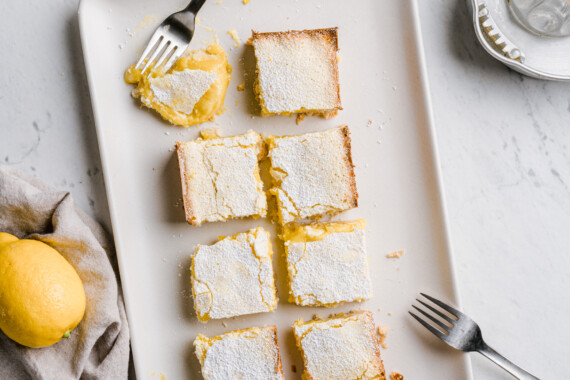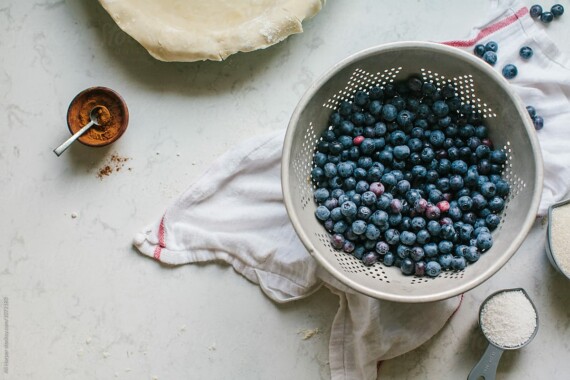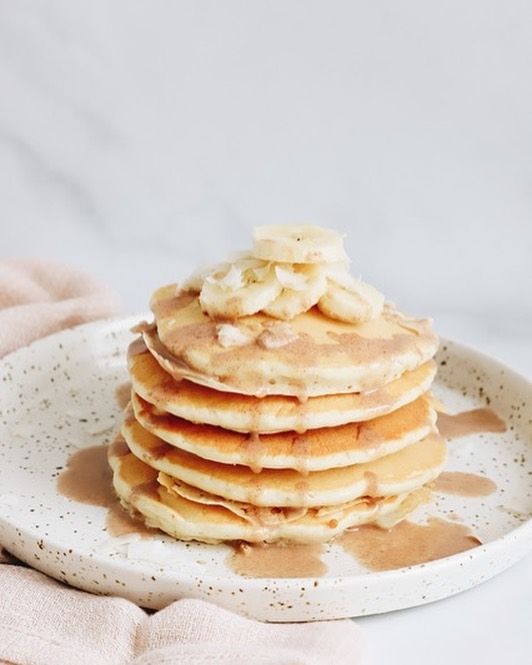If you have a food blog, you probably already know that SEO is critical to your blog’s success. It’s one of the main ways that people discover your website and come to know (and love!) your food blog.
At Foodie Digital, we’ve found that many food bloggers know that SEO is important, but don’t realize that there are actually two different types of SEO to think about:
It’s easy to assume that these are one and the same.
But food blog SEO and recipe SEO are different, and understanding exactly how they are different is key to maximizing the success of your food blog.
Food blog SEO
The goal with food blog SEO is to have posts appear on the first page of Google’s search results over time. It’s the process of publishing and then editing, repairing and improving the content in a post.
Food blog SEO is powered by high-quality content, strong user signals, and making sure your post satisfies search intent.
If you have a post for a chocolate chip oatmeal cookie recipe, the SEO title, the introduction that you write, and even the photos that you use are all things that contribute to food blog SEO.

The tools you need for food blog SEO
Food blog SEO leans on tools like Yoast SEO to power what displays in Google’s search results. If you’ve ever gone into the Yoast SEO plugin in Wordpress’ back-end and edited your SEO title and meta description, then you’ve also worked on improving your food blog SEO.
Other important influences
Site speed, Core Web Vitals, internal linking, and link building are all factors that influence food blog SEO. Essentially, any technique that helps your blog earn a higher spot in the search engine results.
A guide to Core Web Vitals for food blogs
If you operate a food blog and are searching for ways to understand and strengthen your site’s Core Web Vitals, this post is for you.
Recipe SEO
The primary goal with recipe SEO is to convert traffic and earn clickthroughs.
Recipe SEO is all about recipe structure data which is auto-generated from a WordPress recipe card plugin. The structured data built into your recipe card plugin is a standardized format that provides helpful and explicit recipe information to Google.
The usefulness and completeness of the information you include in your recipe card matters. This includes the fields such as ingredients, instruction steps and yield as well as the fields for prep time and cook time, diet, recipe author name, video and a few more.
It’s these fields (called recipe metadata) that make up a recipe’s structured data, which Google uses to learn more about you, your expertise and your recipe.
Without a WordPress recipe card plugin to auto-generate this structured data, a recipe post isn’t eligible for a recipe rich snippet or the featured recipe results, which means you miss out on the opportunity to convert traffic.
If your post does make it into the featured recipe results, it can make a massive impact. About 75% of clicks are earned by posts in positions #1 – #3 in Google’s search results.
Back to the chocolate chip oatmeal cookie example — if you want your recipe to be eligible to appear in the featured recipe results at the very top of Google’s first page — where the majority of clicks are earned — using a recipe card to generate structured data is the only way to do it.
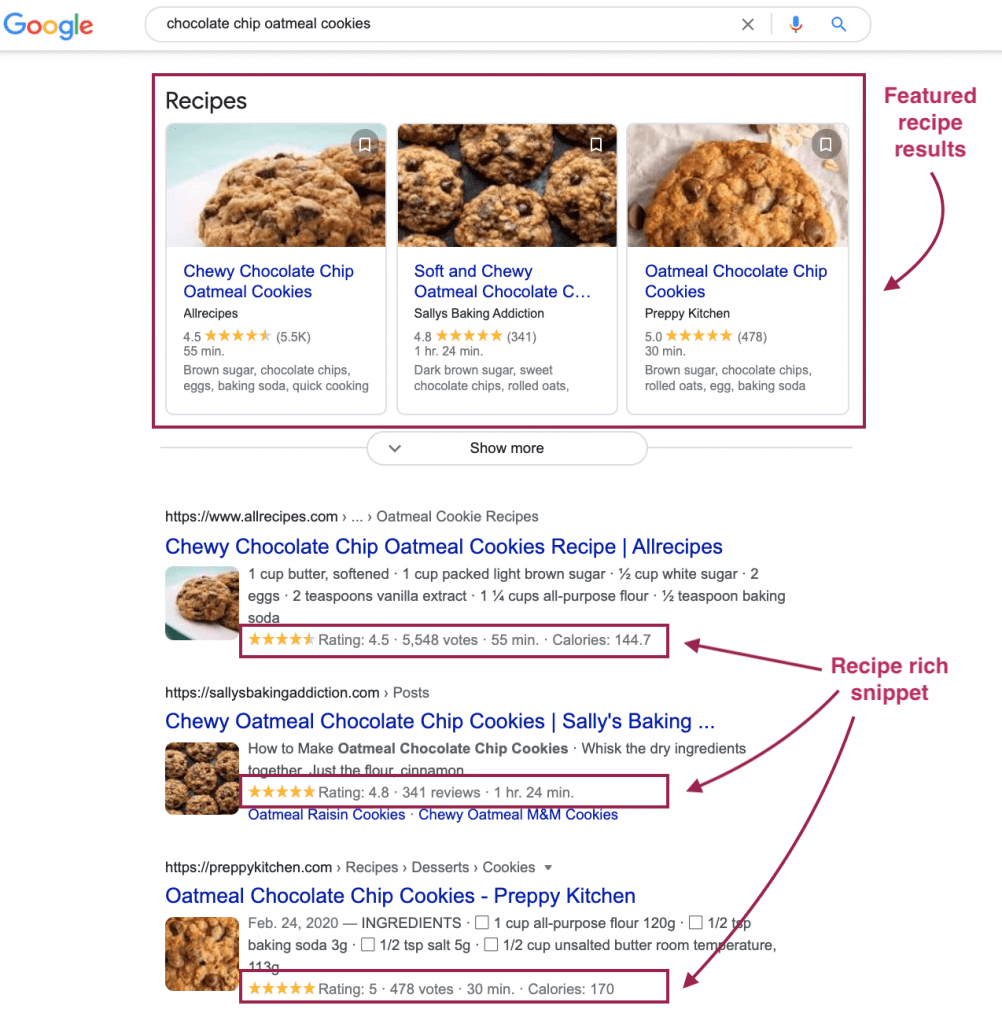
It’s also important to note that generating recipe structured data won’t guarantee that your post will earn a spot in the featured recipe results. There’s no ranking benefit for generating structured data (contrary to popular belief!)
The tools you need for recipe SEO
- WP Recipe Maker, or
- Tasty Recipes, or
- Create
- Plus, Google’s Rich results testing tool
3 best WordPress recipe card plugins compared
Which WordPress recipe card plugin is right for you? In this comparison we look at Tasty Recipes, Create and WP Recipe Maker.
Other important influences
Recipe star ratings and reviews are a type of user-generated content that can help bring authenticity to your recipe posts and build trust with your readers.
The volume of reviews, and star rating a recipe receives on a numeric scale from 1 to 5 stars are forms of social proof that can also sway a post’s clickthrough rate.
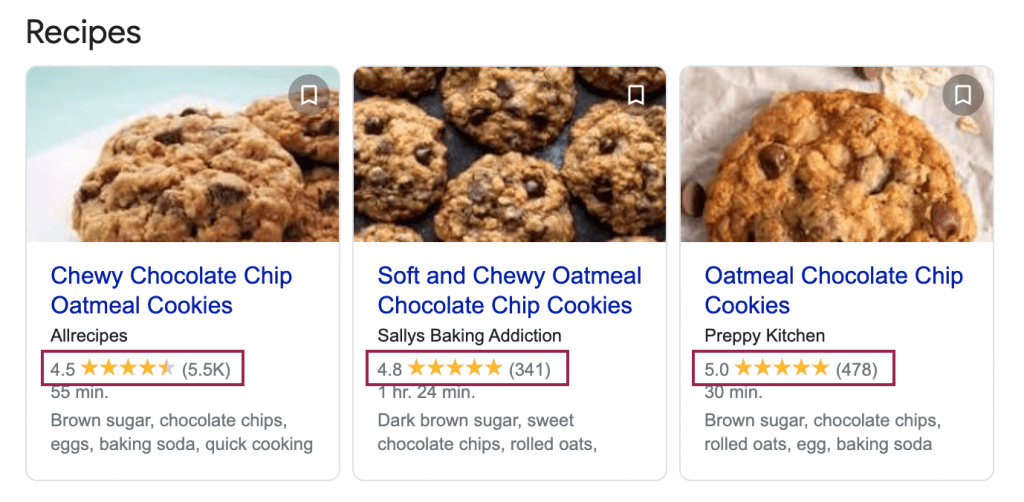
Key takeaways
While food blog SEO can help you rank higher in the search results, it alone won’t make you eligible for the featured recipe results. And while recipe SEO can make your post eligible for the featured recipe results, it doesn’t contribute to your post ranking higher in Google’s search results.
Once you know the difference between these two types of niche-specific SEO, you can start to use the information to your advantage.
There are countless ways to boost both your food blog SEO and recipe SEO.
Working with a skilled partner like Foodie Digital and joining the FD community can help you dive deeper and gain valuable insights into your individual opportunities.
Note: Foodie Digital participates in affiliate programs for select recipe card plugins and hosting providers. The opinions we share are based on our own in-depth research, and the ongoing need for our members to use SEO tools that are future-proofed, credible, professional and well supported.



